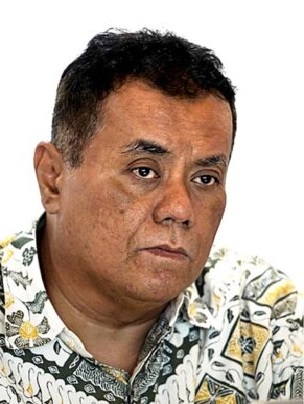A country with consideration of national interests can intervene in investment policies and international trade in the national interest.
Brander and Spencer (1985) introduced the term strategic trade policy. This term was later echoed by Paul Krugman (1986), in his book Strategic Trade Policy and the New International Economics. At the core of this idea, a country with consideration of national interests can intervene in investment policies and international trade in the national interest. Unlike the usual trade policies, strategic trade policies are often referred to as industrial policies because they try to change the structure of the industry / economy.
Before the World Trade Organization (WTO) was established, Korea and Taiwan were examples of countries that actively and successfully used industrial policies to change the structure of the economy. The secret of its success lies in the discipline of setting targets to set the time and turn of the sequence of target industries, ranging from light industries such as apparel, semi-conductor shipping, until now becoming a leading producer of various information technology products. In fact, with technological excellence, now also penetrated the tourism and entertainment industries that compete with Holywood.
The difference between the two countries is on the company scale. Taiwan stresses itself on small and medium scale companies, while in Korea the conspiracy is included in the policy goals. The establishment of the WTO in 1995 and restrictions on the use of export subsidies limit the use of strategic trade policies. However, this does not discourage the use of industrial policy. The shape shifted from determining the leading score to the function of habitat preparation, such as human resource development and research and development in the higher education system using the triple helix concept. These two things are usually preceded by improvements in the business climate and physical infrastructure development.
In the past, Indonesia had a strategic trade policy blueprint. However, in the course of time, the main problem is the implementation of the implementer. Not to mention, each policy must be translated into technical guidelines as guidelines for implementation in the field.
As a result, Indonesia’s industrial structure does not reflect the plans in the blueprint. For example, in the book Five-Year Development Plan (Repelita) during President Soeharto’s reign, Indonesia had once imagined to be an agribusiness country that produced its own agricultural machinery. There are two major events that make the structure of the Indonesian industry as planned. First, the appreciation of the Japanese yen in the mid-1980s which forced Japan to relocate its industry, especially automotive, to Southeast Asia including Indonesia. Second, the commodity bonanza in 2004-2012 which made Indonesia a leading producer of palm oil.
If you look at the latest industry survey data in the ISIC 5 category number, the share of exports to manufacturing exports is 14.5 percent. Meanwhile, automotive, including spare parts, amounted to 34 percent. Nevertheless, imports of raw and semi-finished materials remained around 75 percent of total imports. The problem is, the industrial supply chain that produces industrial inputs for the downstream industry is not developed as a result of the high cost economy due to licensing, logistics, and scale of operations. Consequently, the pressure on the current account and trade balance, especially when most of the sources of growth come from domestic, such as public consumption. This is not a problem if the economy is more export-oriented. For countries with large populations such as Indonesia, what is needed is a balance between export and domestic orientation.
The US-China trade war opened up the weaknesses of Indonesia’s industrial structure in the form of not only the current account deficit, but also the trade balance deficit. To overcome this, a combination of improvements in industrial structure is needed, an increase in the secondary income surplus by increasing the quality of human capital, and an increase in the travel balance surplus by developing a new Bali tourist destination.
Transportation, including the use of private vehicles in the future, is moving towards environmentally friendly and renewable energy. As has been shown in the Government Regulation on electric vehicles, a machine with battery power will be the engine in the future. One estimate shows, there will be an exponential increase in the use of electric vehicles. Currently electric vehicles only take a 5 percent share of world motor vehicle sales. This share is predicted to increase to 40 percent in 2030 and 95 percent in 2050. The signing of the PP Electric Car gives the potential of the automotive industry as an economic locomotive and exporting sector in the future.
Nickel and cobalt are the products of Indonesian mines which are the main elements in the electric car battery industry. The use of biofuels for diesel-based internal combustion engines is included in this scenario. To improve efficiency between engine and weight, vehicle bodies and parts and accessories will be in the form of petrochemical-based composite products. The temporary suspension of nickel exports can be seen as a signal of reorienting strategic trade policies.
The US-China trade war seems to have broken the egg. Strategic trade policies will increasingly be used by each country or country block to seize a place in the world supply chain. As in every case of Game Theory, passivity and rashness never win the optimal position. Conversely, a combination of negotiation and bluffing with a balanced dose will make parties like the European Union and others take into account all the consequences of all the strategies to be taken. This will provide a new Nash-style balance that is more optimal for Indonesia.

